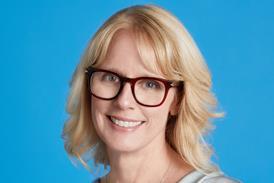Red Bee Media’s chief marketing officer Stella Medlicott asks if consumer expectation is exceeding the industry’s ability to deliver.
The way we consume media is changing forever, driven by new technologies that are turning traditional thinking on its head. At the same time, viewer attitudes and behaviours continue to evolve at pace, with the great experiences from BBC iPlayer and Sky Go stimulating an increasing desire for “anywhere, anytime” viewing.
We are in no doubt that the appetite for TV viewing is growing. The way it is delivered, how content is watched and the way content is found are some of foundations of the media revolution. The ubiquitous uptake of connected TV sets will start to blur the boundaries of how TV is delivered.
It is at this point where the audience will not care how their TV is being delivered, and the connected TV will enable them to seamlessly shift from a live linear viewing experience into a catch up or VoD environment. This will dramatically change the landscape of the content aggregator.
A different but equally important change to the future viewing experience is led by the explosion of companion devices, opening up TV to benefit from technical innovations.
With this change there will be expectations of a “media grade” TV experience across all devices, no matter what piece of glass you are looking through.
The consumer wants more control and more choice and they get frustrated because they can’t find content they want to watch. Within this context the electronic programme guide (EPG) along with the remote control navigation is set to change dramatically over the next few years.
A new and intelligent form of content discovery will help guide viewers through a potentially baffling array of content and give them more.
Recently, there hasn’t been a day that goes by without a new app or innovation making headlines in this space. There are applications from Zeebox, Umami, Shazam all clamouring to provide integration into the social network and provide a broader and richer viewing experience.
In other sectors Zite allows the consumer to build a personalised magazine. The technology is there, and consumers are willing to give away personal information, if they trust the brand and believe they will get something out of it.
The question arises over whether there will be a single aggregator for finding content. There is some discussion around whether a new aggregator will be driven by the TV critics such as A.A. Gill and Caitlin Moran who will perform the act of “super reviewer”.
But there is a need for a blended solution for content discovery, driven by personalised recommendations, social recommendations and a schedule delivered by a trusted editor.
Once again technology innovation offers the media industry something more.
Broadcasters and content owners can leverage the investments already made creating a brand that audiences trust, by complementing it with the science of personalisation, recommendations and social integration. The companion applications enable the content owner to engage in a real dialogue with the viewer.
Fast forward to 2020 and great TV content has an exciting future, it will be liberated by the personal, social and flexible dual screen world, intertwined with the likes of Twitter, Facebook and other apps.
The communal TV experience seems set to stay, but it will increasingly be in a virtual sense.
With these seismic changes taking place, we’re hoping to shed some light on the needs and wants of TV audiences of tomorrow at our second Tomorrow Calling live debate on Wednesday 16 November from 5.30pm to 7pm when we will reveal and discuss findings from an in-depth consumer survey.
To watch online register at www.redbeemedia.com/tomorrowcalling





























No comments yet